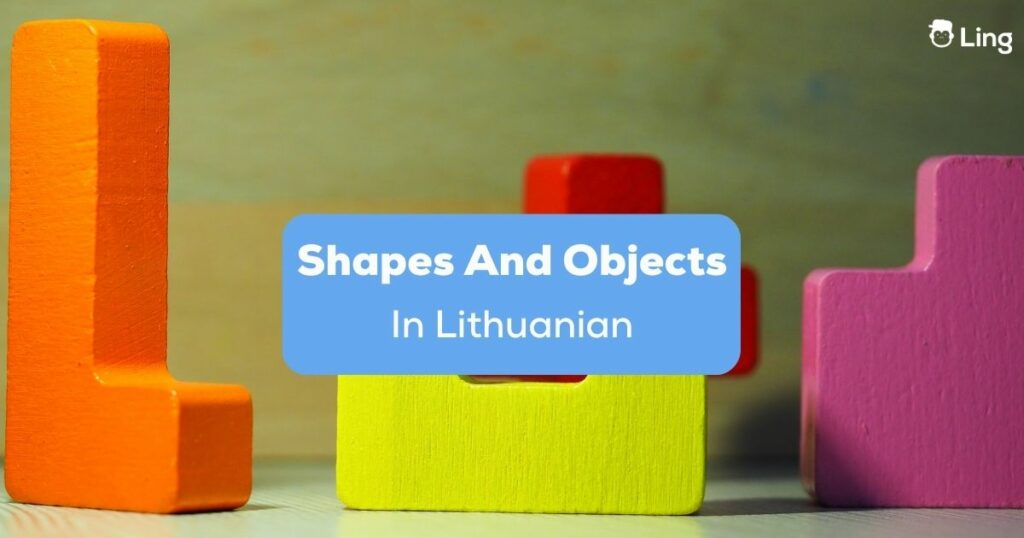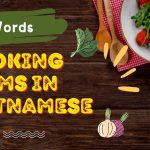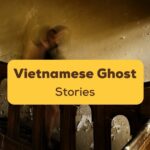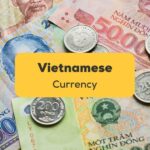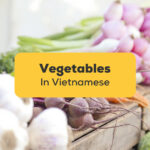Are you a Lithuanian language student starting with the basics? Want a quick 101 on basic vocabulary for everyday situations? Then, you have landed on the right page. In this article, we are going to learn all about different shapes and objects in Lithuanian.
Now, this may seem a frivolous topic to some, but knowing the vocabulary for these basic terms is always a good idea. You never know when they come in handy! So, let’s get on with today’s Lithuanian lesson!
Different Shapes And Objects In Lithuanian
The Lithuanian word for the term ‘shape’ is forma. And let me assure you that learning the name of shapes in Lithuanian is not that difficult. You’ve got apskritimas for circle – think wheels and pizzas. Stačiakampis is the term used for a rectangle. A triangle is called trikampis, and don’t forget about kvadratas when referring to a square. Come, let’s take a look at other shapes in the Lithuanian language.

2D Shapes In The Lithuanian Language
| English | Lithuanian |
|---|---|
| Circle | Apskritimas |
| Square | Kvadratas |
| Rectangle | Stačiakampis |
| Triangle | Trikampis |
| Oval | Ovalas |
| Quadrilateral | Keturkampis |
| Pentagon | Pentagonas |
| Hexagon | Šešiakampis |
| Heptagon | Septynikampis |
| Octagon | Aštuonkampis |
| Semicircle | Pusapskritimis |
| Rhombus | Rombas |

3D Shapes In The Lithuanian Language
| English | Lithuanian |
|---|---|
| Cube | Kubas |
| Cuboid | Stačiakampis |
| Sphere | Sfera |
| Hemisphere | Pusrutulis |
| Cone | Kūgis |
| Cylinder | Cilindras |
| Prism | Prizmė |
| Pyramid | Piramidė |
| Globe | Gaublys |
| Diamond | Deimantas |
While that’s a lot of words to memorize, there is an amazing app that fits perfectly for your busy schedule. The Ling app contains 200+ lessons filled with interactive games, flashcards, and even real dialogues from native speakers.
Aren’t these reasons good enough to give a shot to the Ling app? So, without further ado, go to your Play Store or App Store and download the Ling app. Happy learning!
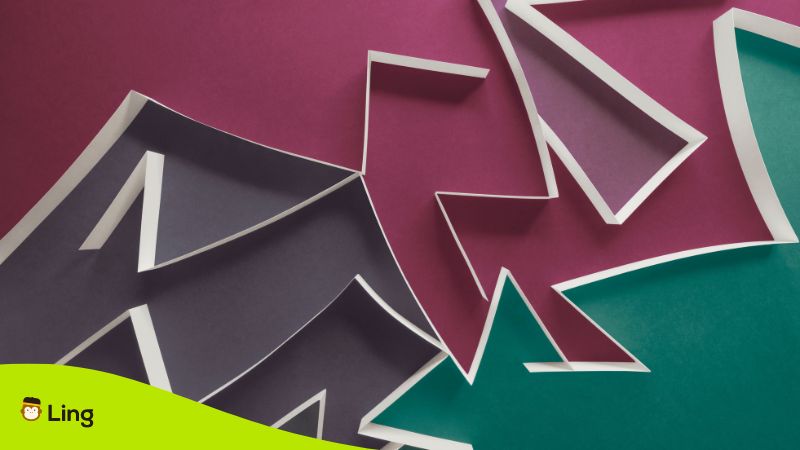
Irregular Shapes In The Lithuanian Language
| English | Lithuanian |
|---|---|
| Wavy | Banguotas |
| Zigzag | Zigzago |
| Teardrop | Ašaros formos |
| Elliptical | Elipsės |
| Crescent | Pusmėnulio |
| Arrow | Rodyklė |
| Lightning bolt | Žaibas |
| Blob | Dėmė |
| Kite | Aitvaras |
| Star | Žvaigždė |
List Of Object Names In The Lithuanian Language
Now, onto objects! To refer to the term ‘object’, Lithuanians use the word objektas. Stalo (table) is where your dinner parties go down. Kėdė (chair) is your trusty throne for Netflix binging. Need to write stuff? Grab a pieštukas (pencil). Read on to know more!
| English | Lithuanian |
|---|---|
| Table | Stalo |
| Chair | Kėdė |
| Pencil | Pieštukas |
| Lamp | Lempa |
| Phone | Telefonas |
| Car | Automobilis |
| House | Namas |
| Cup | Puodelis |
| Bed | Lovas |
| Blanket | Antklodė |

Patterns In Lithuanian Folk Art
Traditional Lithuanian folk art (liaudies menas) is characterized by a rich tapestry of intricate and traditional patterns (raštai), amazing colors, and symbolic shapes, reflecting the country’s cultural heritage. Prevalent geometric motifs like zigzags, triangles, and diamonds represent harmony and balance in nature.
Curved lines and spirals evoke the cyclical nature of life. Distinctive symbols like the saulė (sun) often feature prominently, symbolizing life, energy, and eternity.
Nature-inspired elements such as stylized flowers (gėlės), leaves (lapai), and animals (gyvūnai) are meticulously incorporated. These elements celebrate the relationship between humans and the natural world, often conveying ideas of growth, fertility, and interconnectedness. Crosses, both simple and elaborate, are significant symbols representing faith and protection.
Color plays a vital role, with a preference for earthy tones like red, green, and brown, derived from natural sources. These Lithuanian colors not only evoke the land’s vitality but also showcase the art’s connection to the Lithuanian landscape.
So, traditional Lithuanian folk art intertwines these patterns and shapes into a harmonious visual language that preserves cultural traditions, stories, beliefs, and aesthetics, illustrating the profound connection between art and life.
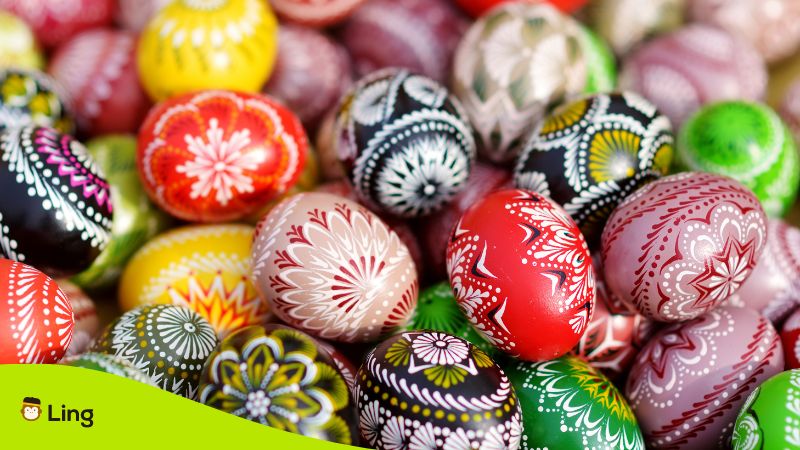
Why Learn Lithuanian?
Modern Lithuanian is one of the oldest living languages, tracing its roots back over 4,000 years! Isn’t that astonishing? It’s a Baltic language, which means it’s related to Latvian, but it’s unique with its rich history and distinctive grammar. Like many other languages, Lithuanian sentences mostly follow the subject-verb-object word order.
Now, being a language enthusiast, you are aware that speaking multiple languages opens up a world of opportunities. The same is the case when it comes to Lithuanian. Sure, many Lithuanians speak English, but learning their language shows respect and helps you connect on a deeper level with the locals. Plus, if you’re into linguistics or the history of the Lithuanian language, you’ll love exploring the ancient ties and influences in Lithuanian.
For instance, did you know that Lithuanian shares a huge part of its vocabulary, particularly word formation, with Sanskrit, an Indo-Aryan language from ancient India? Both of these Indo-European languages have roots in the ancient Proto-Indo-European language and a long list of borrowed words.
Learn Lithuanian With Ling
Now that you have learned all about the basic shapes and objects in the Lithuanian language, why not learn some more basic Lithuanian vocabulary? Head straight to the Ling app, and you’ll be greeted with an amazing language-learning experience that will enable you to greatly improve your listening, reading, writing, and speaking skills in one go.
This gamified app has an intuitive and interactive user interface that not only lets you course through your learning pathway smoothly but also lets you have fun while doing so! All the quizzes and fun exercises lead to a lot of rewards and whatnots! The cherry on the top? Ling’s AI-powered chatbot is there to hold your hand while you learn to have on-the-spot conversations pertaining to day-to-day situations in your new target language.
Wonder what makes this feature so successful? The audio lessons are recorded in the voice of native speakers, of course! This enables the users to pay special attention to the tones and inflections used in the new language while simultaneously allowing them a better chance at improving their pronunciations. Not only that, but you can also learn multiple languages simultaneously. You just have to choose from the 60+ options on offer!
